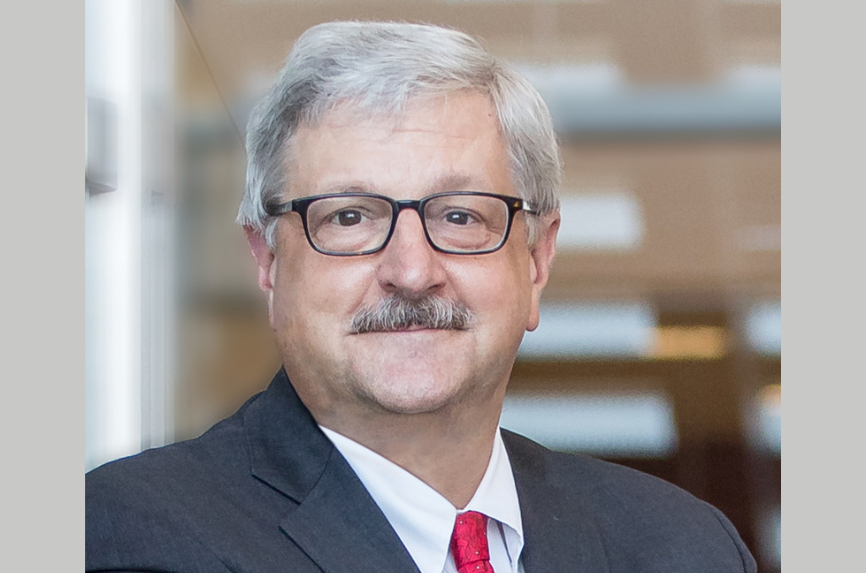Hastings Center News
Bioethics Chats: Arthur Derse
Welcome to our inaugural chat, the first in a series of informal conversations between Hastings Center President Vardit Ravitsky and a Hastings Center fellow or other distinguished bioethicist about a timely topic.
The first guest is Arthur (Art) Derse, MD, JD, a Hastings Center fellow who is Director of the Center for Bioethics and Medical Humanities; Julia and David Uihlein Chair in Medical Humanities; and Professor of Bioethics and Emergency Medicine at the Medical Collect of Wisconsin. Back in 1994, Art started the MCW-Bioethics listserv, the virtual watering hole for bioethicists. Back then, it was the only online platform where bioethicists around the globe could share information with one another. But even today, surrounded by social media, MCW remains indispensable to bioethicists. On the 30th anniversary of the listserv, Ravitsky and Derse chatted about how he came to start the listserv, how it has evolved, his advice to young bioethicists, and what he is currently reading. The conversation has been edited for clarity.
Vardit: MCW-Bioethics has been an invaluable resource throughout my career and I’m so grateful to you for creating it all these years ago. What gave you the idea to start it?
Art: Email was just emerging. Universities had just started connecting to the internet. I got my first email address maybe just a year or two earlier, when a colleague introduced me to these things called listservs that you could create to have a discussion with a group by email. But there were no listervs in bioethics.
In the 1990s, several bioethics programs, including the Medical College of Wisconsin, sponsored an annual ‘summer camp,’ a semi-academic short sojourn in the countryside that I was fortunate to have been invited to. At these events, I met wonderful bioethicists whom I admired and had only read about and seen at conferences. And I remember thinking it would be really nice to connect in this less formal way at other times. And so, in 1994 I set up a listserv with about a dozen people I had met at the summer camp, saying, “Hey, would you like to try this? It’s just a place to be able to chat and do some thinking outside of academic publications.”
It was wonderful, and it took off. Within a year, we had our first 300 subscribers, which astounded me. Today, there are just under 600 academic bioethicists on the list.
Vardit: How has the listserv changed over the years? And what impact do you think it has had?
Art: In the early days it was a place to get up-to-date information about things that were not yet well publicized because there really wasn’t an active internet. Examples include the Oregon Death with Dignity Referendum (enacted in 1997), HIPAA (passed in 1996), the cloning of Dolly the Sheep (in 1996). But even with the internet, MCW-Bioethics is a place to share something late-breaking. When Covid-19 occurred, the listserv was incredibly helpful for people who were sharing ideas and protocols on allocation of health care resources. MCW-Bioethics connects people, including people working in areas that overlap but who might not have connected before.
Vardit: I was very fortunate to join the list when I was doing my PhD in Israel. And at the time, late ‘90s, there were very few people doing bioethics around me. So, the global impact of the list, the fact that you didn’t limit it to the U.S., was important to me.
Art: Some of our best insights into world views on bioethics have been from our international members. It’s truly a world connector.
Vardit: What bioethics issues keep you up at night?
Art: One is thoracoabdominal normothermic regional perfusion for vital organ retrieval for transplantation. The reason it keeps me up is that it’s very much about our drawing lines, in this case, lines about life and death, and being careful about what they are both in ethics and the law.
Vardit: What are the ethical tensions around this complex topic?
Art: The issue concerns the protocol for organ donation after circulatory death, which says that after the declaration of death we wait five minutes and if there’s no heartbeat, no breathing, then the person is pronounced dead. But with normothermic regional perfusion we use ECMO, extracorporeal membrane oxygenation, for resumption of circulation in the individual’s body, and often their heart starts beating again. So, this appears to violate the very definition of death, of which one method of determination requires the “irreversible cessation of circulatory function.” Here, the cessation of circulation is now no longer irreversible, or even permanent.
In addition, aortic arch arteries to the brain are intentionally occluded in these individuals. This protocol appears to violate the dead donor rule, which says that you can’t take a vital organ from someone who is not dead, and you can’t cause their death in procuring that organ. [Derse co-authored an article in the Hastings Center Report: “Neither Ethical nor Prudent: Why Not to Choose Normothermic Regional Perfusion.” (July-August 2024)]
Vardit: Art, what’s on your bedside reading table right now?
Art: Books about end of life. One of them is Lucid Dying by Sam Parnia. It’s a look at attempts made to resuscitate individuals. Parnia documents the new methods in use with cardiopulmonary resuscitation that may result in successful outcomes after extended amounts of time. He also speculates about the experiences that several individuals have had after they have been declared dead and were then resuscitated.
Another book is How to Make a Killing: Blood Death in Dollars in American Medicine by Tom Mueller. It’s about the for-profit dialysis industry. There’s a recent study showing that for elderly patients, dialysis adds an average of about 77 days of life. You may say, “Oh, my gosh! That’s two and a half months. That’s so wonderful.” Well, it is and it’s not. It’s not futile, but there’s a high price to be paid for those people at the end of their lives. Patients and families may not deem that the remaining time, a significant amount of which is taken up by dialysis, is worth it. But dialysis is a for-profit industry, and there is every incentive to provide it because it’s paid for. I think clinicians should rethink any automatic recommendation of dialysis at the end of life. It’s not always “well, it can’t hurt,” because it can affect the quality of life in those days. And the mere fact that it’s being provided for and paid for by the federal government doesn’t make it necessarily a good choice.
The third book I’m reading is We All Want Impossible Things by Catherine Newman, a novel about the friendship of two women at the end of life. It’s a very moving depiction of these lifelong friends as one woman is entering hospice. I really like the title because I think it’s a motto for bioethics in general. We all want impossible things. But we can’t always provide them.
Vardit: That’s a great way to end. But I have one more question. If you had one sentence to give advice to a junior bioethicist today, what would it be?
Art: Don’t be afraid to reach out to scholars in the field to find mentors. Your mentor may lie outside of your institution or your smaller group of people in school. Reaching out and connecting across institutions and even across countries can be extremely helpful.
Vardit: Talking about mentorship is a beautiful way of bringing us back to the MCW-Bioethics listserv. That was a place of networking and connection for me as a junior scholar. It opened a lot of doors. So, I’ll end by thanking you again for creating MCW-Bioethics and for being our inaugural guest.

